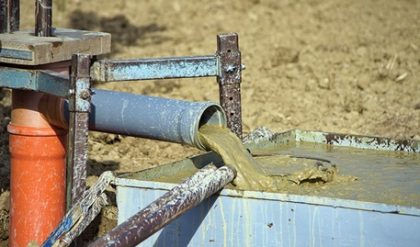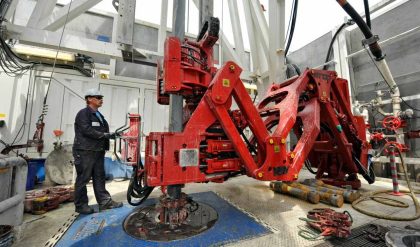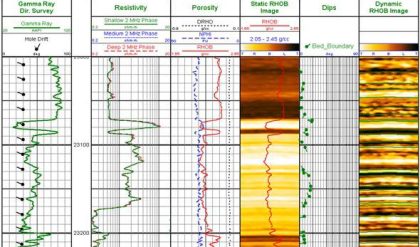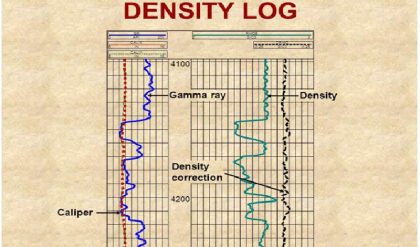
Oil and gas exploration makes use of several types of drilling methods and platforms based on the type of formations, geographic location, soil type and the like. Here are five of the most common drilling methods used in extracting oil and gas from beneath the earth:
- Percussion or Cable Drilling
- Rotary Drilling
- Dual-Wall Reverse-Circulation Drilling
- Electro-Drilling
- Directional Drilling
Percussion or Cable Drilling
Percussion drilling is an oft-used manual drilling technique in which a hammering bit is attached to a long cable that is then lowered into a wide open hole. The technique is also known as cable drilling, wherein the driller uses a tripod to support the tools. By going back and forth with the bit, the action loosens the soil in the borehole, which is then extracted with the help of a bailer. At intervals, the bit is removed while the cuttings are suspended in water, which is then removed by pumping to the surface. A steel casing helps prevent the hole from collapsing down temporarily and also to protect the hole against contamination of groundwater. The temporary setting is to be removed after a permanent screen and casing are installed. This type of drilling is perfect for unconsolidated and consolidated formations including sand, silt, sandstone and even gravel. Manual percussion can reach depths of about 25 meters.
Rotary Drilling
Rotary drilling is also one of the most common methods of drilling, especially for digging up exploratory and production wells, which boast of depths that exceed five miles below the ground. In this method, lightweight drills are used to drill low-depth wells on land. Rotary mobile and floating drills of various sizes are then used for drilling exploration wells. The equipment is mounted on a platform with a 40-meter-high derrick, that consists of a rotary table, a handy engine, mud mixer and an efficient injector pump. It also includes a winch and 27-meter long pipe sections. The rotary table then directs the square kelly, which is connected to the drilling pipe. The mud swivel on the pipe is subsequently connected to blowout preventers. The pipe is known to rotate at a velocity of 40 to 250 rpm with the drill made of drag bits, sharp cutting edges or rolling cutters with strong teeth.
Cuttings are then removed by fluid circulation that gets inside the pipe. The penetration rate is faster when using air-based drilling fluids compared to the water-based ones. A drag bit is useful in this scenario to penetrate unconsolidated sediments, while the roller bit can drill through consolidated rock. The overall rotation speed of the drill can be increased or decreased depending on the hardness of formation material.
Dual-Wall Reverse-Circulation Drilling
Dual-wall reverse-circulation is a type of rotary drilling itself in which two concentric drill pipes are used to create a controlled flow. The drilling fluid is pumped through an outer swivel to reach the bottom of the bit, and then ricochets upward into the main pipe. All cuttings are carried upward through an internal pipe and with the help of surface swivel. The method also allows for geologic sample collection, with samples usually delivered through the cyclone created at the surface. The method is compatible with both rotary drilling and percussion drilling methods. The fluids are circulated within a controlled space and all cuttings can be recovered any time.
The method is applicable for all types of geologic formations and does not require surface casing, too.
Good sample recovery is one of the main strengths of this method. The method also allows for fast penetration in alluvial or fissured rock. Also, it does help in delivering an accurate estimate of aquifer yield from the depths of the formation.
Electro-Drilling
In this method, rotary tables, winches and the like are driven by electric motors, thus leading to better flexibility in operations along with remote-controlled drilling. These drills are new methods of oil and gas exploration, as they provide more direct power to the drill bit by connecting the motor above the bit, below the hole.
The electro-drilling system has been successful in complex geological conditions where there is use of weighted mud or mud mixtures. Electro-drilling has made its presence felt in various places including Turkmenistan, Azerbaijan and Ukraine, which are keen to implement electro-drilling widely to boost savings in energy and material usage.
Combining the advantages of rotary and hydraulic-motor methods, this method involves a big range of drill-bit rotational speeds. This method can also use different borehole cleaning agents. One can even implement controlled drilling of deviated boreholes with this method.
Directional Drilling
Directional drilling is actually an extension of the rotary drilling technique, which guides the drill on a curved path with the deepening of the hole. Directional drilling can help oil explorers reach deposits that cannot be extracted by vertical drilling. Reduced costs is the major driver, as several wells can be drilled in all directions on a single platform. This also allows one to tap into undersea reservoirs and now, by using computers to guide the automatic drilling machines, without connecting and disconnecting sections.
Some other drilling methods include abrasive drilling that makes use of an abrasive material for driving pressure to cut through the substrata, and explosive drilling and flame piercing, two more methods that are used in some drilling scenarios.






Comments are closed.